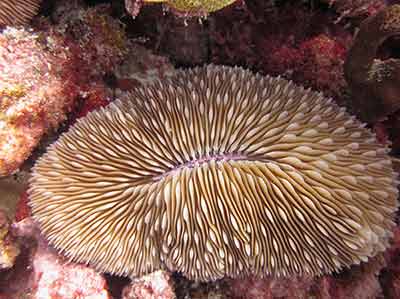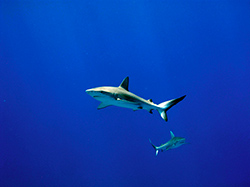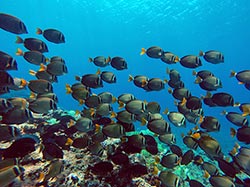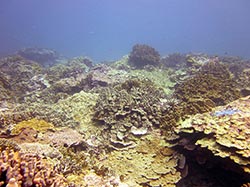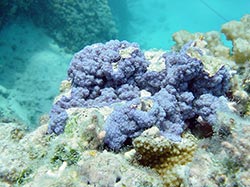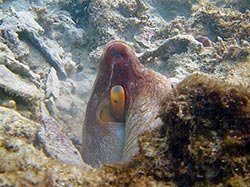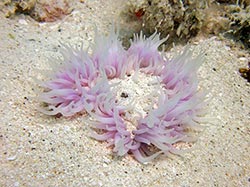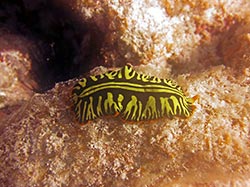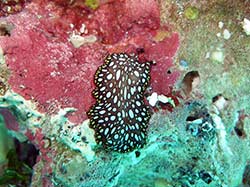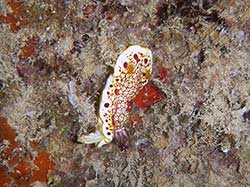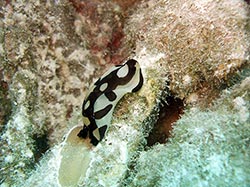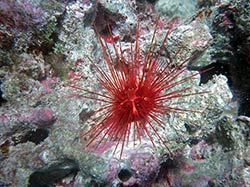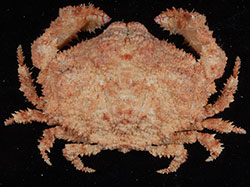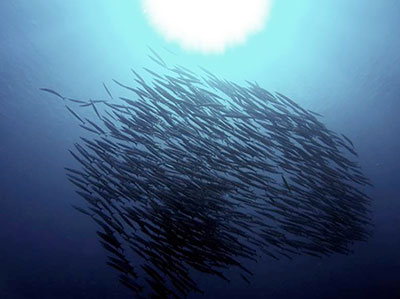RAMP | August 27, 2014: The Seen and Unseen |
| by 2014 RAMP Chief Scientist Scott Godwin |
Coral reefs provide food and shelter to many marine organisms both seen and unseen. Although coral reefs account for less than one percent of the entire ocean floor, they harbor about 25 percent of all marine life. It is a rare opportunity to have the chance to experience a coral reef environment that is not heavily influenced by human activities.
The Papahānaumokuākea Marine National Monument, which encompasses the Northwestern Hawaiian Islands, is one of those places. First impressions of the habitat and its residents provide a glimpse into what a natural state of a coral reef can be if not impacted by human activities. The reef creatures that are noticed in most cases are fish and corals.
Fish in the Monument are abundant and noticeably larger on average. This is true in all types of fish ranging from sharks to algae-eating surgeonfishes. A uniform representation of fish with different modes of acquiring and consuming food, or guilds, is an indicator of intact populations. Corals are also more abundant and cover greater area in such places as the shoals surrounding Lisianski Island.
The Hawaiian Archipelago has a low diversity of corals compared to coral reefs in the western portion of the tropical Pacific. For instance, there are about 26 species of hard corals in Hawaiʻi, compared to more than 500 in areas such as Indonesia. Although less diverse, there is a great abundance of coral within the Monument and there are seven species that have their population center in this part of the archipelago. Although these populations of fish and coral represent the charismatic signs of an intact coral reef, the bulk of the diversity is represented in the mostly unseen marine invertebrates.
There are several groups of invertebrates represented in coral reef communities: sponges, cnidarians (hydroids, anemones, corals), worms, mollusks (sea slugs, snails, clams), arthropods (shrimps and crabs), echinoderms (sea urchins, sea stars, sea cucumbers) and ascidians (sea squirts). Intact reef communities will harbor an abundant variety of these unseen inhabitants, which represent active predators and grazers at their level on the coral reef.
An octopus, for instance, is a mobile predator just like a shark, as is a flatworm, which preys on marine worms and sea squirts on the bottom. There are predators that are permanently attached to the seafloor, such as anemones, and other stationary animals, such as ascidians and sponges, that filter their food – tiny particles of organic material – from the water. The majority of non-coral marine invertebrates are opportunistic gatherers of food, such as sea slugs and sea urchins.
These cryptic (hidden) species are as vital to the functioning of an intact coral reef as the corals and fish. It is within these diverse communities that undescribed species still exist. For instance, between 1999 and 2008, 780 new crabs, 29 lobsters and 286 shrimps were described by marine invertebrate taxonomists from around the world. These are considered to be well-known groups yet new species are still being discovered in this and many other marine invertebrate groups.
This stresses both the importance of preserving intact coral reef areas and continuing basic baseline inventories of the species that exist within them. The quantitative (measureable) data on coral and fish that is collected during efforts like the 2014 RAMP expedition are extremely important but the qualitative information (impressions and observations) also reveal the unique nature of places like the Monument. Therefore it is with both an empirical and naturalist eye that scientists must view a place like the Papahānaumokuākea to document what makes up an intact coral reef ecosystem.
Return to RAMP Expedition Log.
